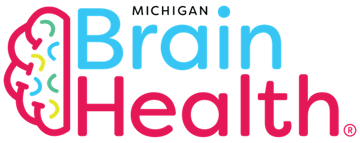
ADD - Type 7
Basal Ganglia typically overactive
- Frequently anxious or nervous
- Physical stress symptoms, such as headaches
- Tends to freeze in social situations
- Dislikes or gets excessively nervous speaking in public
- Predicts the worst
- Conflict avoidant
- Fear of being judged
HELPFUL TREATMENT TIPS
For those with Type 7 ADD, it is important to partake in relaxing straties, such as heart rate variability biofeedback, physical exercise and certain supplements such as the relaxing mineral, magnesium and a calming substance from green tea, known as L-thenine. Theses supplements and strategies promote both relaxation and focus. "It has been estimated that nearly 65 percent of the adult population experiences some form of stress, and these numbers are continually rising. Since ancient times, it has been said that drinking green tea induces relaxation. A pioneer in the science of green tea, Taiyo found this relaxation effect to be due to the presence of the amino acid L-theanine, found almost exclusively in tea. Suntheanine is my preferred brand of L-theanine and has been shown to be safe based on numerous favorable toxicology and efficacy studies. Unlike other stress reducing supplements, Suntheanine does not cause drowsiness. Suntheanine has been consumed in beverages, foods and supplements since 1994 with no indication of adverse reactions or contraindications. Suntheanine was awarded the “Food Ingredient Research Award” at the 1998 Food Ingredients Europe and “Best New Product of 2000” at Nutracon. Suntheanine is protected by over 40 U.S. and international patents for its various physiological efficacies and L-isomer specific production processes." [4]
Supplements that can help improve relaxaion and focu for Type 7 ADD patients include:
- L-Theanine (I prefer the highly researched brand, Sun-Theanine)
- Magnesium
- Min-Tran®
- Holy Basil
- Magnolia Officinalis
- Ashwagandha
- Phosphatidylserine
- Valeriana Officinalis
- Passionflower
- Lavender
- Lemon Balm
- Bacopa Monnieri
- Gotu Kola
Type 7 Anxious ADD cases typically respond very well to a individualized program of nutritional support and brain-based therapy consisting of neurofeedback (brain wave retraining), heart rate variability (HRV) biofeedback , and Interactive Metronome. If we can help in any way, feel free to contact us at Michigan Brain Health on our ADHD hotline; 586-930-5148.
We are located on the west side of Van Dyke Avenue in Shelby Township, Michigan, across from the Shelby Township Library.
Remember, brain maps help find the cause of ADHD. Neurofeedback can often correct the problem. Always remember one of my mantras., "The more you know about how your body works, the better you can take care of yourself."
Always remember one of my mantras., "The more you know about how your body works, the better you can take care of yourself."
For more details about the natural approach I take with my patients, take a look at the book I wrote entitled: Reclaim Your Life; Your Guide To Revealing Your Body's Life-Changing Secrets For Renewed Health. It is available in my office or at Amazon and many other book outlets. If you found value in this article, please use the social sharing icons at the top of this post and please share with those you know who are still suffering with chronic health challenges, despite receiving medical management. Help me reach more people so they may regain their zest for living! Thank you!
ALL THE BEST – DR. KARL R.O.S. JOHNSON, DC – DIGGING DEEPER TO FIND SOLUTIONS
Notes:
1. Amen, Daniel G.. Healing ADD Revised Edition: The Breakthrough Program that Allows You to See and Heal the 7 Types of ADD (Kindle Locations 2796-2797). Penguin Publishing Group. Kindle Edition.
2. https://www.psychologistworld.com/biological/neurotransmitters/dopamine
3. Amen, Daniel G.. Healing ADD Revised Edition: The Breakthrough Program that Allows You to See and Heal the 7 Types of ADD (Kindle Locations 2799-2801). Penguin Publishing Group. Kindle Edition.
4. http://www.suntheanine.com/what-is-suntheanine/





